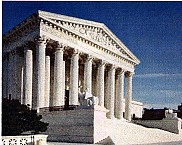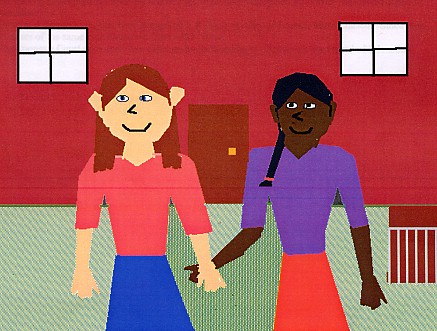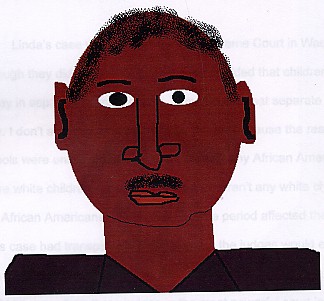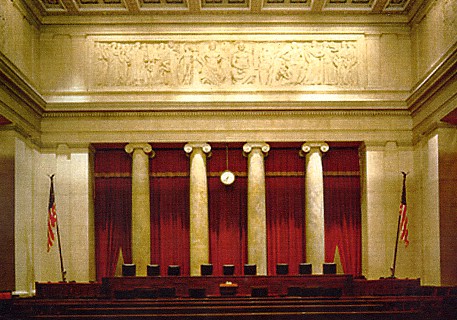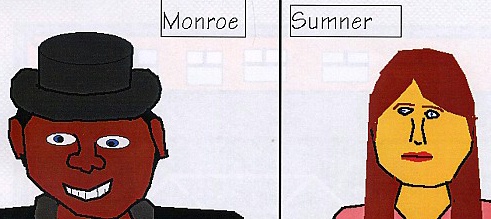
KidPix picture by Taylor M.
Both the Monroe School and the
Sumner School had good teachers who were paid about the same amount of
money. Just like the children, all of the teachers at the Monroe School
were black, and all of the teachers at the Sumner School were white. The
authorities said that whites and blacks should be segregated because people
were used to it being that way, and not everyone wanted to change. Our
group believes that the authorities should allow people of any race or
color to go to the school that is closest, because the Declaration of Independence
states that all men are equal.
Group Members: Sachin, Taylor, Matt S., and Chris M.
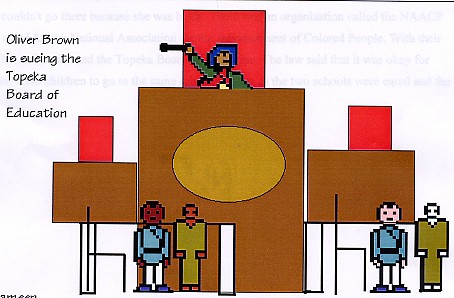
KidPix picture by Rameen & Chris M.
With the help of the NAACP (National
Association for Advancement of Colored People), Oliver Brown sued the Topeka
Board of Education. The school authorities argued in court that it was
OK for white and black kids to be seperated or segregated, as long as the
two schools were "equal."
Group Members: Connell, Chris M., Rameen, and Hunter |




